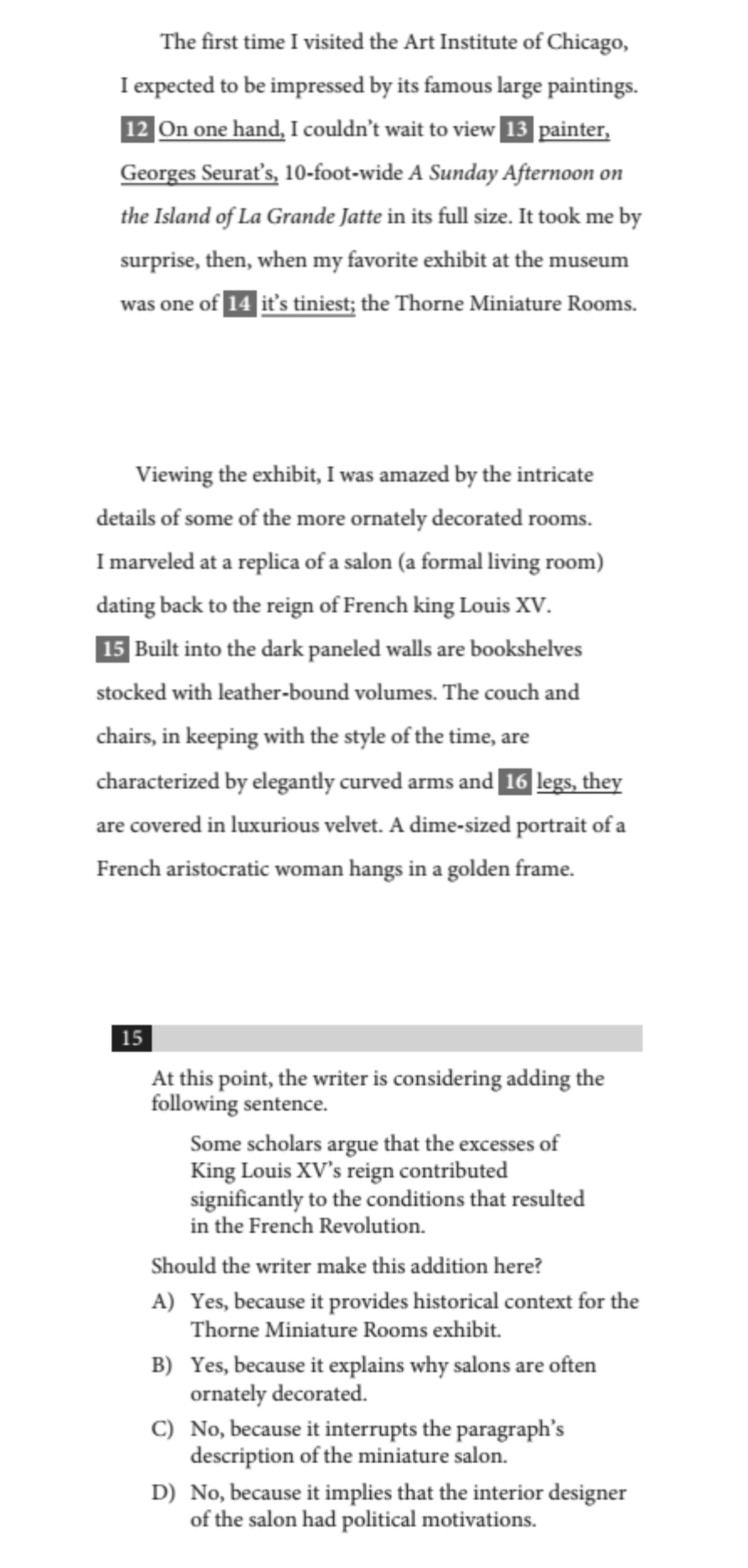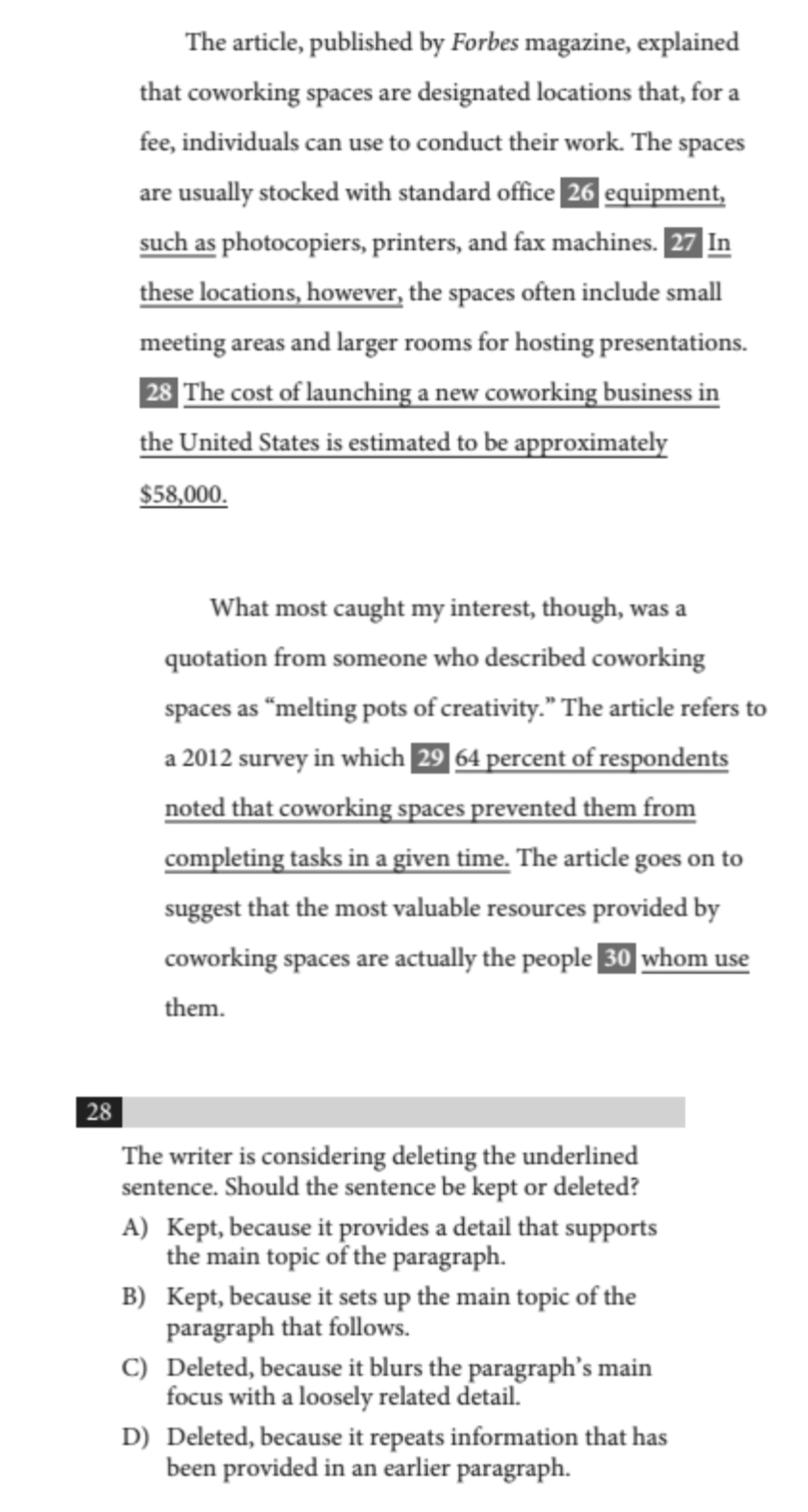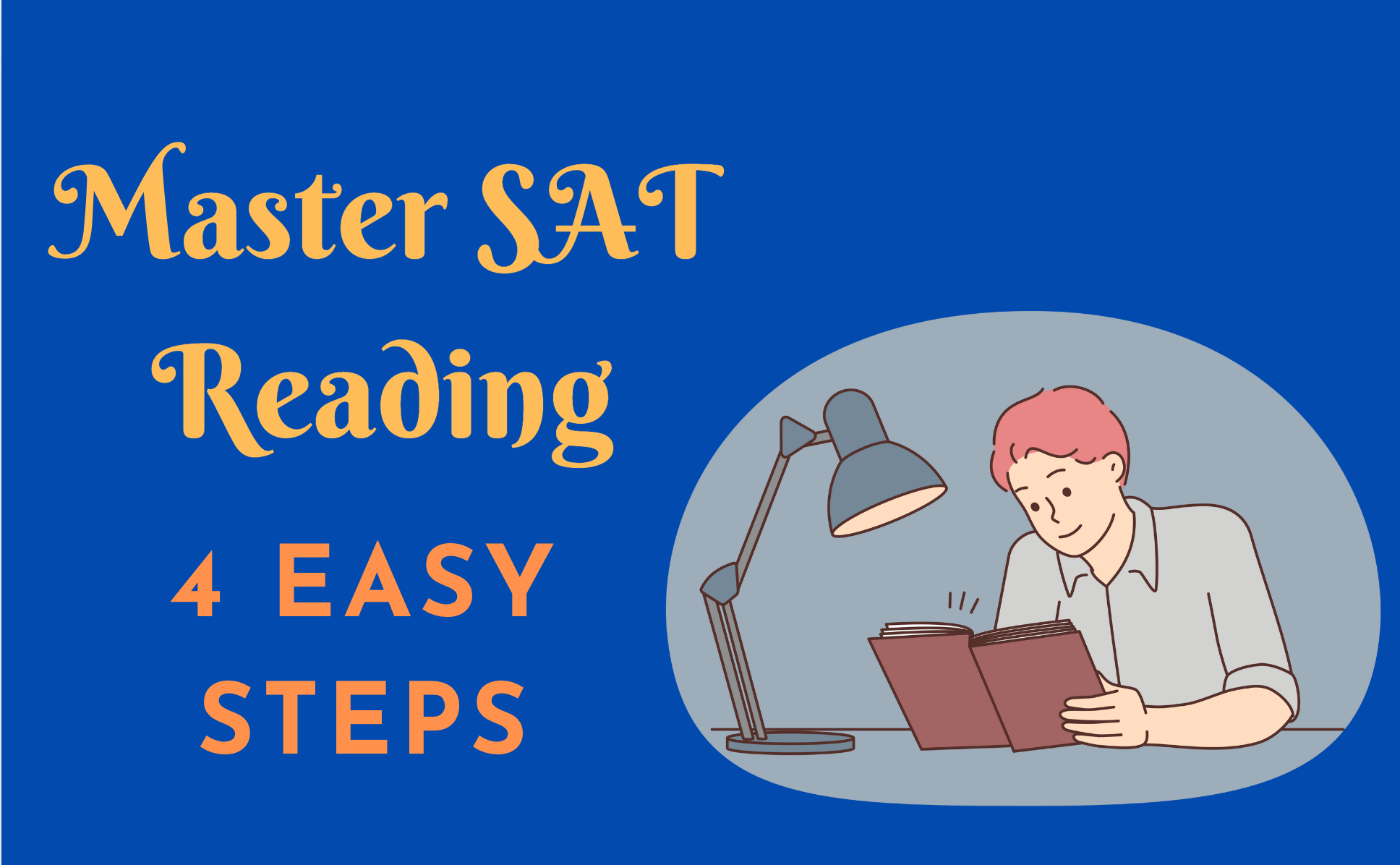Add/Delete Questions on SAT Writing: 6 Steps to Answer
Author
Hartwell
Date Published

Add/Delete questions are an integral part of the SAT Writing section, requiring you to decide whether a specific sentence should be added to or deleted from a given passage. These types of questions are common in SAT Writing, and mastering how to approach them is key to improving your score.
In this guide, I’ll cover the following:
A thorough explanation of add/delete questions
A breakdown of their basic structure
Sample questions to give you a clear understanding
Strategies and a step-by-step method to solve these questions effectively
What Are Add/Delete Questions?
Add/Delete questions typically ask you to consider the inclusion or exclusion of a sentence in relation to its appropriateness and relevance within the passage. These questions come in two parts: first, deciding whether the sentence should be added or deleted, and second, identifying why it should or shouldn’t be included. Successfully answering these questions requires strong reading comprehension and the ability to evaluate how a sentence aligns with the overall flow of the passage. On average, you can expect 2-4 Add/Delete questions in a single SAT Writing test.
The General Structure of Add/Delete Questions
Familiarizing yourself with the way these questions are structured can help you confidently navigate them during the exam. Below is an overview of the format you’re likely to encounter:
Add Questions
In an "add" question, you are asked whether a specific sentence should be included in the passage. Your task here is not only to determine if the sentence adds value but also to select the correct reasoning for your choice.

Delete Questions
The structure of "delete" questions is slightly different but serves the same purpose. You’ll be prompted to judge if an underlined sentence should be removed based on its relevance or whether it disrupts the passage's flow.


In some cases, a deleted question might be phrased differently, but its objective remains the same. For instance, one version of the question may directly ask if the sentence is unnecessary at a specific point in the passage, while another version might present this judgment as part of the answer choices.
Key Tip:
Regardless of the wording, read both the question and answer options carefully. For instance:
In one variation, selecting A or B would mean the sentence should be deleted.
In another phrasing, choosing C or D indicates the sentence should be deleted.
Careful attention to detail in both the question and answer choices will ensure you select the correct response.
Step-by-Step Guide to Answering Add Questions
To effectively tackle add and delete questions on the SAT Writing section, follow these simple steps. Below, we’ll walk through a detailed approach using an example from a practice SAT passage.
Add Questions: A Step-by-Step Process
Here’s how to solve an “add” question by analyzing the first two paragraphs of a sample passage.

1: Analyze the Added Sentence to Understand Its Purpose
Begin by understanding what the proposed sentence is conveying. In this example, the sentence explains that some scholars believe the extravagant lifestyles during King Louis XV’s reign contributed to the conditions that caused the French Revolution. This gives us a clear idea of the sentence’s main idea.
2: Check the Passage Context to Determine If the Sentence Fits
Next, carefully evaluate where the sentence would be placed in the passage. Does it fit logically with the content and flow? In this case, the previous sentence briefly mentions King Louis XV, but the overall focus of the passage is on an exhibit showcasing miniature rooms. The following sentences delve into a description of the miniature salon’s appearance. Since the added sentence discusses the causes of the French Revolution rather than the room itself, it would not align with the paragraph’s focus. Thus, the sentence is irrelevant in this context.
3: Answer the “Yes” or “No” Question First
Based on your understanding of the passage, decide whether the sentence should be added. Since the proposed sentence doesn’t fit the paragraph’s context, the answer is no.
4: Eliminate Irrelevant Answer Choices
Once you’ve answered no, eliminate the two “yes” answer choices immediately (usually A and B). That will leave you with the two “no” options to choose from.
5: Summarize Your Reasoning in Your Own Words
To support your decision, explain why the sentence should not be added. For example, you could say: “The sentence shouldn’t be included because the paragraph focuses on describing the miniature salon’s appearance, and the proposed sentence about the French Revolution is off-topic and irrelevant.”
6: Choose the Answer Choice That Matches Your Reasoning
Finally, select the answer choice that most closely reflects your reasoning. In this case:
D is incorrect because it mentions the interior designer, which is not relevant to the passage.
C is correct because it matches our reasoning that adding the sentence would disrupt the passage’s description of the miniature salon.
Step-by-Step Guide to Answering Delete Questions
Delete questions, like add questions, require you to evaluate a sentence's relevance and determine whether it disrupts the flow of the passage. Below is a detailed step-by-step approach to solving a deleted question, using an example for guidance.
Delete Questions: A Step-by-Step Process

1: Determine the Purpose of the Sentence in Question
To begin, identify what the underlined sentence is doing. In this example, the sentence provides the cost of starting a coworking business in the US. Understanding the sentence's function will help you assess its relevance to the passage.
2: Refer Back to the Passage’s Context
Next, analyze the sentence’s placement in the passage and check if it aligns with the topic being discussed. In this case, the passage focuses on describing coworking spaces and their traits or qualities. Nowhere else in the passage is there any information about starting a coworking business. Be cautious: you might initially be misled by seeing the word “fee” in the first sentence, but upon closer reading, it’s clear the “fee” refers to the cost of using coworking spaces, not the cost of starting a business. Since the underlined sentence is unrelated to the overall focus on coworking spaces, it does not belong in the passage.
3: Decide If the Sentence Should Be Kept or Deleted
Based on the passage’s focus, the sentence should be deleted, as it is irrelevant and disrupts the flow of the paragraph.
4: Eliminate Irrelevant Answer Choices
Once you determine the sentence should be deleted, immediately cross out answer choices that argue for keeping the sentence (in this case, typically A and B). This will narrow your choices to the two “delete” options.
5: Explain Your Reasoning in Your Own Words
To clarify, explain why the sentence should be deleted. For instance, you might say: “The sentence discusses the cost of starting a coworking business, but that information is unrelated to the paragraph, which focuses on coworking spaces’ qualities.”
6: Choose the Answer Choice That Best Matches Your Reasoning
Finally, examine the remaining answer choices and select the one that aligns with your analysis.
D can be eliminated because it suggests the cost of starting a coworking business was mentioned in the preceding paragraph, which is untrue.
C is correct because it accurately states that the sentence is not related to the main focus of the passage.
Quick Review: General Strategies for Add/Delete Questions
Answering add/delete questions effectively requires a systematic approach. Below are five key strategies to help you tackle these questions with confidence:
1: Understand the Purpose or Meaning of the Sentence
To decide whether a sentence should be added or deleted, you first need to fully understand its meaning and purpose. Ask yourself why the sentence might be included in the passage and how it connects to the surrounding context.
2: Check if the Sentence Fits the Passage Context
Refer back to the passage to analyze whether the proposed sentence logically fits and aligns with the focus of the paragraph or passage.
For added sentences: They must logically follow the previous sentence, connect to the subsequent sentence, and stay relevant to the main focus of the paragraph.
For deleted sentences: A sentence should be deleted if it lies outside the topic of the passage, disrupts logical connections, or is irrelevant to the surrounding sentences.
3: Answer the “Yes/No” or “Kept/Deleted” Question First
Before diving into the reasoning, decide the first part of the question. This could be identifying whether the sentence should be kept or deleted or whether it should be added or not. Ensure this judgment is based on relevance and logical flow within the passage.
4: Eliminate the Incorrect Answer Choices
Once you’ve decided the answer to the first part of the question, immediately eliminate the two answer choices that don’t align with your decision.
If you determine that the sentence should be added, eliminate the two options stating it shouldn’t be added.
If you decide the sentence shouldn’t be added, eliminate the two choices claiming it should be.
This will save you valuable time by narrowing your answer options.
5: Match the Remaining Answer Choice with Your Reasoning
After eliminating incorrect options, carefully evaluate the two remaining answer choices. Before making a final selection:
Summarize in your own words why the sentence should be added or deleted.
Look for an answer choice that most closely aligns with your reasoning.
If no answer directly matches your reasoning, work backwards: start with the most plausible answer choice and cross-check it against the context of the passage.
If time allows, go back and review the question or passage to ensure your reasoning is accurate.
Final Tip:
The key to mastering add/delete questions is practicing them frequently and developing the habit of carefully evaluating how every sentence contributes to the passage’s overall purpose and flow.
Let me know if you’d like additional clarification or examples!
Related Posts

Unlock your potential with key strategies to excel in the SAT Reading and Writing sections for top scores.

Struggling with SAT Reading? Learn a proven 4-step method to tackle passages effectively, avoid traps, and improve your test score!